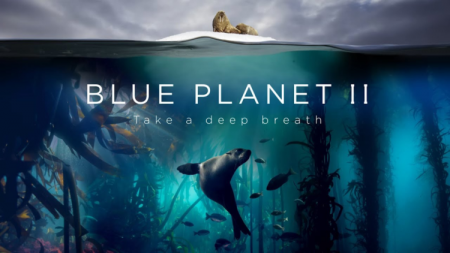You are here
WoRMS featured in Blue Planet II
"Covering almost three-quarters of the Earth's surface, the world’s great oceans are home to an incredibly diverse web of life. The World Register of Marine Species (WoRMS) currently lists just under a quarter of a million species, with new ones being identified all the time. But even as we begin to discover the astonishing diversity of life and gain insight into their behaviour and physiology, human activity is becoming an increasing threat to the oceans and the life within them." (Source: 'Oceans' poster, published by The Open University)
Keywords: Ocean, Blue Planet II, marine science, WoRMS

BBC Blue Planet II documentary series
Methodology
Scientists have used a variety of methods to estimate the global number of marine species and each has its limitations. Data isn’t always reliable and the assumptions of each method can be flawed. A common method is to scale up the fraction of unknown species estimated in a specific sample or region. Other methods rely on our system of taxonomic classification (the way we name and group different species). We can use the rate of discovery of new families and orders or the rate at which new species are described to estimate the total number of species there must be.

Some methods have used expert opinion on how many unknown species are expected in a particular group the expert works on, based on potential new species that they know of but haven’t yet been described. According to a study from 2012, the average time between the discovery of a new species and its description is 21 years.
Because each method relies on assumptions and particular datasets, they have resulted in wide variations in estimates. The very high estimates (any larger than 10m) are now thought unlikely by many, but current common estimates still vary between around 0.3m and 2m marine species.
This means that, after 250 years of describing, naming and cataloguing the species we share our planet with, we are still a long way off achieving a complete census. But we do know that 242,500 marine species have been described because their names are now managed in the World Register of Marine Species (WoRMS) by about 300 scientists located all over the world.
Every year, almost 2,000 marine species new to science are added to the register. This includes species from relatively well known groups such as fish, almost 1,500 of which were described in the past decade. Most undiscovered creatures likely remain in the least explored habitats such as the deep oceans, the most diverse environments such as tropical shallow seas, and the most diverse groups including molluscs and crustaceans.
The text in this methodology section is republished from a The Conversation article under a Creative Commons license. Read the original article. Original authors were Tammy Horton (University of Southampton), Andreas Kroh (Natural History Museum Vienna) and Leen Vandepitte (Flanders Marine Institute, VLIZ).
Used components of the LifeWatch Infrastructure
World Register of Marine Species (WoRMS)
The 'Oceans' poster, which was published by The Open University to accompany the BBC Blue Planet II documentary series, mentions the World Register of Marine Species (WoRMS).
The aim of WoRMS is to provide an authoritative and comprehensive list of names of marine organisms, including information on synonymy. While highest priority goes to valid names, other names in use are included so that this register can serve as a guide to interpret taxonomic literature.
The World Register of Marine Species (WoRMS) is one of the largest component data systems contributing to the LifeWatch Species Information Backbone.

News
How many undiscovered creatures are there in the ocean? (The Conversation, November 30 2017)
Contact
Go to The Open University's OpenLean website to request your free 'Oceans' poster download. (Unfortunately the print item is now out of stock. However, it is still available for download for you to print at home or enjoy on-screen.)
Useful links
BBC One website: Learn more about the Blue Planet II documentary series
BBC iPlayer: Watch all episodes of Blue Planet II on BBC iPlayer
The Open University's OpenLearn website: Download your free 'Oceans' poster
